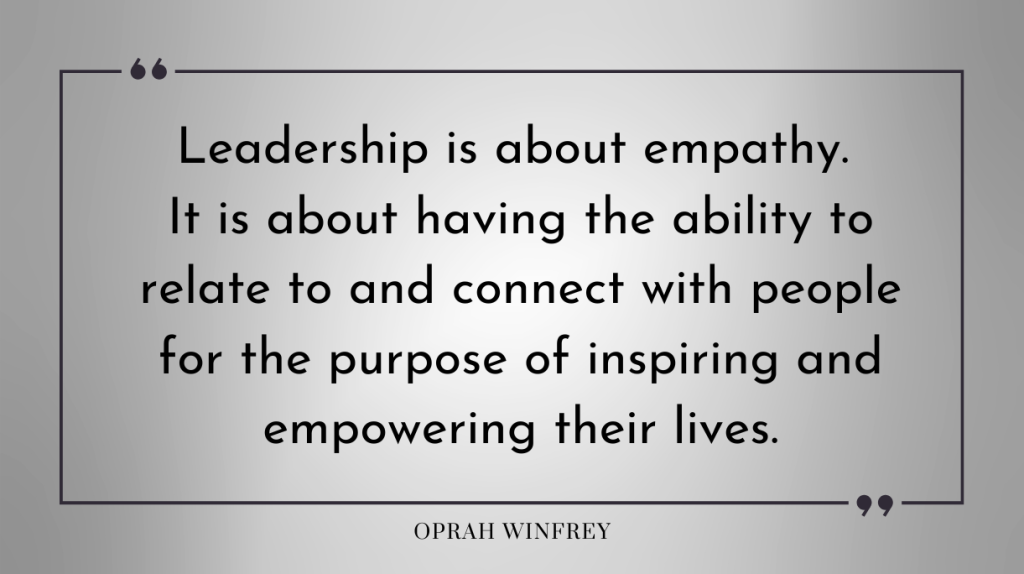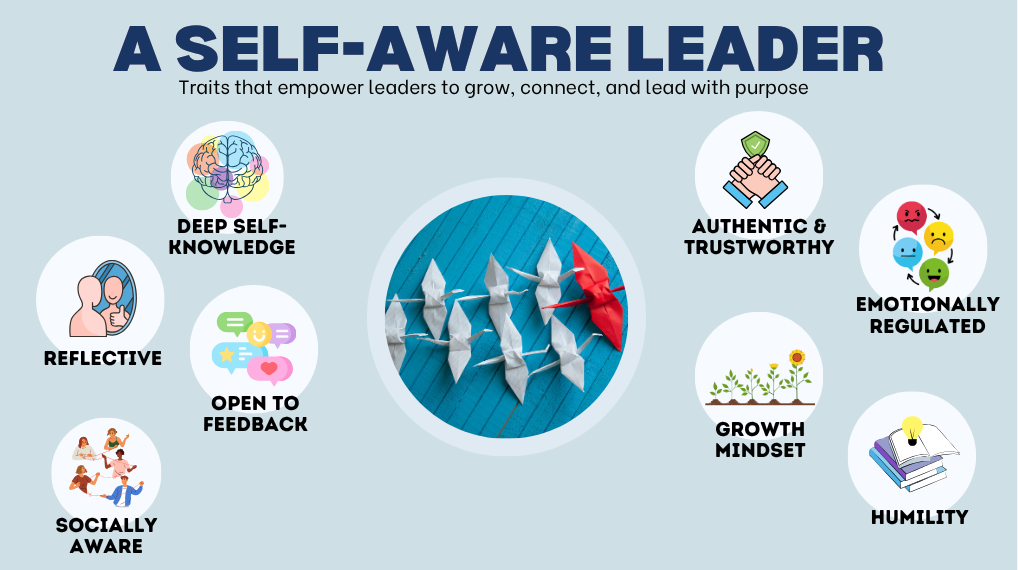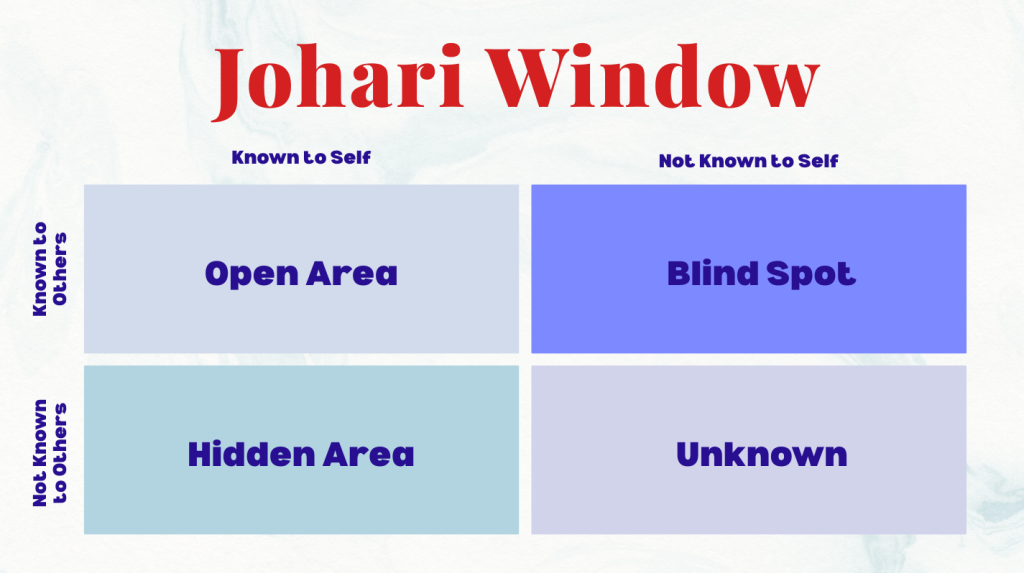Emotional Intelligence at Work: It Starts with Self-Awareness
Given how AI and automation are rapidly taking over routine tasks, this new technological era is forcing us to redefine what makes us valuable at work. It’s no longer about who has the most experience or who can process data the fastest. As machines become better at completing tasks and brainstorming ideas, a new kind of currency is rising to the top: emotional intelligence. This is precisely what helps leaders to navigate stress, inspire confidence, and guide others through uncertainty with emotional steadiness.
Emotional intelligence is so much more than being the “nice” or “polite” person in the room. It is the dynamic interplay between how well someone understand their internal world and how that shapes every interaction they have. Leaders who understand their own emotions, values, strengths, and blind spots are better equipped to lead with authenticity and build safety with their teams. Without it, even the most experienced professionals risk falling into reactive habits, damaging communication, and eroding team morale.

Leaders who can stay composed, respond thoughtfully to conflict, and model emotional regulation create environments rooted in fairness, integrity, and psychological safety. This improves employee satisfaction and also drives team performance and long-term organisational health. Research has consistently shown that high self-awareness in leadership is directly linked to greater employee trust, stronger commitment, and improved team outcomes.
This article marks the beginning of a series on Emotional Intelligence at Work, starting with its most essential component: self-awareness. Leaders who cultivate this essential skill will make better decisions under pressure, drive engagement and model the kind of resilience that organisations need to thrive. As we start off this series, we will explore practical strategies for cultivating emotional intelligence at all levels: starting with understanding yourself.
The True Measure of Leadership Is How You Make People Feel
You might wonder “Why does it matter how they feel, as long as the work gets done?”
The truth is, performance is not about the output, it’s also about the quality, consistency, and sustainability of that output. A “win-at-all-costs” mindset might deliver short-term results but it comes at a long-term cost. Leaders who focus on hitting KPIs while ignoring the emotional well-being of their teams are sacrificing long-term loyalty, trust, and performance for quick wins. That trade-off may not be immediately visible, but the damage compounds over time. How people feel directly impacts their decision-making, collaboration, and willingness to go the extra mile. Numbers and KPIs will highlight what was done. How your team feels will reveal whether they can keep doing it and whether they even want to.
People will not give their best to leaders they don’t respect, or worse, resent. Tasks might still get done, but that critical “extra effort” disappears. Stress may be familiar, but familiarity doesn’t make it functional. When people feel unseen, undervalued, or overwhelmed, their emotional and physical energy drains over time. What starts as quiet disengagement can turn into full-blown burnout. When that happens, people will leave, either by quitting, or mentally checking out at work. Leaders must recognise when pressure starts building because the aftermath becomes the leader’s responsibility:
- Morale drops across the team.
- Workload redistributes, adding stress to those who remain.
- Reputation suffers as word spreads about the culture.
- Retention becomes harder especially for top performers.
In short, when a leader doesn’t care how people feel, they eventually inherit the emotional debt. They’re the ones left picking up the pieces when they have to rebuild trust, rehire, retrain, and try to restore what could have been protected in the first place.
What Does It Mean to Be a Self-Aware Leader?

Do you understand your emotional triggers and communication patterns? Recognising these internal signals is the first step toward making conscious choices instead of unconscious reactions. This involves 2 main steps:
1. Understanding your own internal landscape: This means observing your underlying motivations, emotional triggers, habits, and the behavioural patterns you fall into. Self-awareness is a dynamic skill and it requires constant practice to stay attuned to your feelings and how they influence your thoughts and actions.
2. Being able to perceive your impact on others: You cannot gain respect or lead well if you are not aware of how your tone, body language and actions are perceived by those you work with. For example, a leader who is self-aware knows that a sigh of frustration might be interpreted as dismissiveness by their team, even if that is not what they intended.
A self-aware leader adopts a reflective orientation, regularly pausing to examine their values, motivations, and past experiences to better understand how it influences their decisions and leadership style. This introspective mindset is coupled with a strong openness to feedback where they actively seek input from others and use it to improve. By understanding their values, self-aware leaders create a more consistent and authentic presence, which directly increases their credibility and influence with their team.
When faced with pressure or conflict, they manage their emotions instead of letting their emotions manage them. Self-regulation allows leaders to remain calm and collected under pressure. A leader’s ability to regulate their emotions is a crucial defense against losing their temper when plans go awry. They don’t lash out or shut down during tough times. Rather, they stay calm and keep the team focused on solutions. This allows them to remain adaptable and keeps leaders from derailing progress with an unproductive reaction. Self-aware leaders pay close attention to how others perceive them. They know how to read the room, listen actively, and adapt their approach to fit the needs of their team. These leaders demonstrate high social awareness and use that insight to communicate effectively and foster collaboration.
Importantly, they exhibit humility, they are willing to admit when they don’t have all the answers, own their mistakes, and view feedback as opportunities for growth. They possess a growth mindset and are committed to continuous learning, engaging in ongoing self-assessment and development to enhance their leadership effectiveness and support both personal and organisational growth.
Seeing Ourselves Clearly: Using the Johari Window to Build Awareness
The Johari Window is a simple yet powerful psychological model that helps us improve our self-awareness and communication. Developed by psychologists Joseph Luft and Harrington Ingham, this framework divides our personal knowledge, including our feelings, motivations, and behaviours, into four quadrants:
- Open Area – What you know about yourself and others know too
- Hidden Area – What you know about yourself but choose not to share
- Blind Spot – What others notice in you, but you are not aware of yet
- Unknown Area – What neither you nor others are aware of yet
By visualising these areas, the Johari Window provides a clear roadmap for personal growth and for building more effective relationships. It’s a tool that illustrates how our self-perception can differ from how others see us, revealing crucial insights for developing emotional intelligence.

Using the Johari Window helps build self-awareness by providing a structured way to discover your blind spots. These are the aspects of your personality that are evident to others but remain unknown to you. By actively seeking and receiving feedback, you can reduce the size of this blind spot, which in turn expands your open area (i.e., the part of yourself known to both you and others).
The Johari Window facilitates a shift from isolated self-perception to mutual understanding. What makes this tool so powerful is how it helps teams move from guessing about each other’s intentions to really understanding them. As people become more open and receptive, what was unclear becomes a shared language. This process not only increases self-knowledge but also fosters greater transparency and trust, making it an invaluable tool for leaders and teams.
How To Lead with Composure and Master Workplace Triggers?
Managing emotions effectively begins with consistent self-reflection. This is why it’s important to take time regularly to review how you feel, why you feel that way, and how those emotions influence your actions. This practice turns vague discomfort into a clear insight. When a triggering moment arises, even a simple pause to take a deep breath, can create a psychological buffer between the stimulus and your reaction.
Yet, emotional self-management is not solely about introspection. To grow as a leader, you must be open to external perspectives. This is exactly how the Johari Window framework works to illuminate blind spots. This could involve asking trusted peers or mentors for honest feedback on how you come across, especially under stress. How others perceive your emotional tone is just as important as how you intend it. After building your foundational self-awareness, start to reframe your emotional triggers. By reframing stressful moments as chances to collect data on your reactions, you can observe your patterns and proactively choose a different, more effective response next time.
Lastly, it helps to use precise language when labelling emotions. Instead of using vague terms like “bad” or “off,” naming the specific feeling e.g., frustration, anxiety, disappointment, or excitement can reduce its emotional charge and create the mental distance needed to respond thoughtfully. This small but powerful shift increases self-awareness in the moment and opens the door to more constructive action. When a leader can clearly articulate what they are feeling, it reduces the chance of misinterpretation and conflict. To build on this skill, leaders and team members alike should work to develop a richer emotional vocabulary. The more accurately everyone can describe their internal state, the easier it becomes to communicate with clarity. Over time, this practice can strengthen team dynamics through more empathetic and meaningful conversations.
Conclusion: How to Lead with Authenticity and Emotional Intelligence?
Self-awareness is only the first step on the journey of emotional intelligence. So what’s the next step? It’s applying that awareness in your interactions with others. The most direct path to discovering our blind spots and gaining external awareness necessary for leadership is through honest, constructive feedback.
In our next article of this series, we’ll shift our focus from introspection to interaction. We will focus on how to approach tough conversations and how to exchange feedback with clarity and care. Being able to transform a high-stakes conversation into a strategic tool for personal and team development builds trust and psychological safety. It ensures that difficult truths are surfaced, feedback is acted upon, and progress is made without derailing relationships.
Stay ahead with exclusive insights! Sign up for our mailing list and never miss an article. Be the first to discover inspiring stories, valuable insights and expert tips – straight to your inbox!




